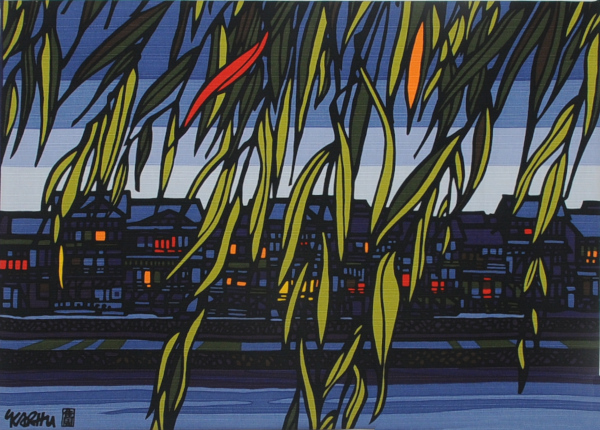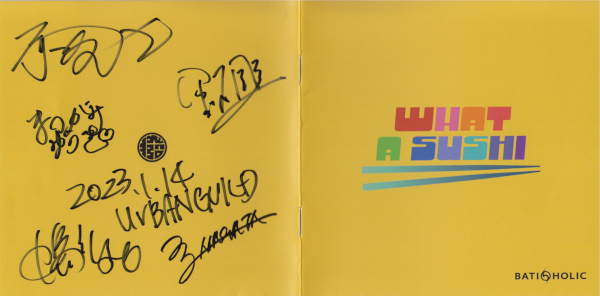Thanks for your kind messages: I’m almost back to normal, only a few sniffles remain and a persistent cough that mostly manifests in the mornings and scares Pumpkin out underneath the covers. My hot water has reappeared too, just as surprisingly as it was gone. Probably it wasn’t frozen pipes, but just a frozen valve in the water heater itself (which is outside). The first hot shower after a few days of washing my hair in a bucket felt like a treat!
There were a few other treats in the last 3 weeks I should be reporting on. First, the Bati-Holic concert on the 14th, which was probably the reason why I got that nasty cold to begin with: I was pretty sweaty after the concert and then bicycled home; even though it was a fairly warm night, it was probably not the best of my ideas…
Second, the Tuesday after, my friend from Tokyo invited me to a kabuki performance in Osaka. It turned out not to be “real” kabuki, but a mix of kabuki and noh theater together with taiko drums. The first half was a bit disappointing – I had seen “Hagoromo” several times before – but the second half with a famous lion dance performance – one father and two son lions – made it all up to me. Performers were Bando Tamasaburo, a kabuki actor famous for his onnagata female roles, and the taiko group Kodo, which I’ve seen before in joint performances like this. It was a great afternoon, even though I got violently sick on the way home and in the end had to cancel our plans to see the Andy Warhol exhibition on the next day.
Last week I was up and running again (mostly) and I visited Daigo-ji temple for work on Thursday. I took some lovely pictures of the snowy temple, and if you don’t mind me repeating myself (or rather: this month’s highlight on What’s up in Kyoto), I’ll write about Daigo-ji next Sunday.
And finally, because I finished all my work and then some relatively early on Monday, I treated myself to another Bati-Holic concert… Sadly, there were not many people, but it was fun anyway. Interestingly, the guys seem to know me already. When I entered, I bumped into one of the members on the way to the dressing room, and he said “Hey, nice to see you again, thanks for coming!” It’s not as if they only have three fans or something, so I find it almost embarrassing when something like this happens…
Anyway, this time, the group was complete, no Corona-necessitated substitutes this time, so my signatures are now complete as well. So happy!
Goodness, I sound like such a fangirl…








